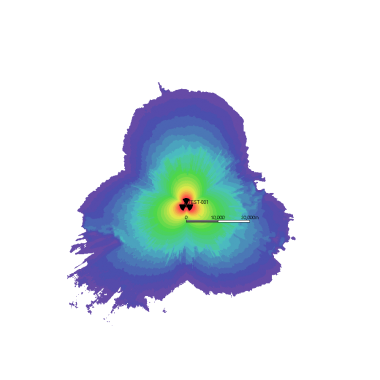Identifier
Uplink (MHz)
Downlink (MHz)
UL EARFCN
DL EARFCN
Duplex Spacing (MHz)
Coverage Area (-100 dBm)
Overview
The majority of the world’s network operators have commercially launched LTE systems in 1800 MHz spectrum (LTE1800 – 3GPP band 3). B3 (1800 MHz) deployments represent greater than 48% of all LTE networks globally. The notable exception to which is North America where the band is not deployed due to an overlap with B2 (1900 MHz) and B4 (1700 MHz) spectrum.
Operators have several motivations for deploying B3 (1800 MHz). Coverage area is twice as large compared to deployments in 2600 MHz, for example. The ability to re-farm existing spectrum assets in 1800 MHz to deploy more efficient LTE technology outdoors and indoors enables enhanced mobile broadband capabilities to be rolled out faster, and to support more customers with a better user experience, particularly when its availability is taken into account or new spectrum bands (e.g. 2.6 GHz or digital dividend spectrum) are not yet available.
There are over 300 systems in 136 countries and territories, either as a single band or as part of a multi-band deployment. B3 (1800 MHz) is used globally in approximately 47% of 4G LTE networks.
The 1800 MHz band has the largest LTE user devices ecosystem with approximately 65% of LTE devices having the ability operate in band 3 spectrum. B3 is the core band for LTE systems in Europe, Asia, and other ITU regions.
Band 3 1800 MHz External Antennas (UE)
With the clear majority of B3 4G networks using a 20 MHz channel bandwidth, most stand-alone networks provide up to 150 Mbps UE DL data rate with clean channel conditions, and up to 400 Mbps in LTE-A Pro. In an ordinary urban environment coverage is limited to between 3 and 8 kilometres, however high gain 2X2 external antennas can provide connectivity out to around 35 kilometres.
As a mid-band frequency antenna size can be an issue, however gains as high as 17 dBi are still possible with a 600 mm dish profile. Environments with obstructions such as vegetation or buildings present immediately in front of a high gain antenna will suffer considerably in which case a more moderate gain antenna with a wider beamwidth is the preferred equipment choice.
Of course with carrier aggregation high gain UE antenna are falling out of favour, instead being replaced with wideband patch array and panel antenna types which provide low VSWR response over the full range of cellular bands from 600 to 3800 MHz.
In 4X4 or higher MIMO format banks of spatially separated UE antennas are preferred over combination form factors. B3 LTE antennas can be searched under Antenna Catalogue.
Carrier Aggregation Configurations
There are 99 CA configurations recorded for this LTE frequency band. To search CA bands please use LTE Carrier Aggregation.
| Configuration Name | Component Carriers | 4G LTE Frequency Bands | Max. Aggregated Bandwidth |
|---|---|---|---|
| CA_3B (B3+B3) | 2 | B3 (1800 MHz) | 10 MHz |
| CA_3C (B3+B3) | 2 | B3 (1800 MHz) | 40 MHz |
| CA_1A-3A (B1+B3) | 2 | B1 (2100 MHz) B3 (1800 MHz) |
40 MHz |
| CA_1A-1A-3A (B1+B1+B3) | 3 | B1 (2100 MHz) B3 (1800 MHz) |
60 MHz |
| CA_1A-3A-3A (B1+B3+B3) | 3 | B1 (2100 MHz) B3 (1800 MHz) |
60 MHz |
| CA_1A-3C (B1+B3+B3) | 3 | B1 (2100 MHz) B3 (1800 MHz) |
60 MHz |
| CA_1A-1A-3C (B1+B1+B3+B3) | 4 | B1 (2100 MHz) B3 (1800 MHz) |
80 MHz |
| CA_1C-3A (B1+B1+B3) | 3 | B1 (2100 MHz) B3 (1800 MHz) |
60 MHz |
| CA_3A-5A (B3+B5) | 2 | B3 (1800 MHz) B5 (850 MHz) |
30 MHz |
| CA_3C-5A (B3+B3+B5) | 3 | B3 (1800 MHz) B5 (850 MHz) |
50 MHz |
Wireless & Mobile Network Operators
There are 0 mobile and wireless operators using this band. To perform search queries please use the Mobile Network Operators section.
No networks have been recorded using this frequency band. Our team is working diligently to expand this database, if an error or omission is noticed we appreciate you letting us know.
